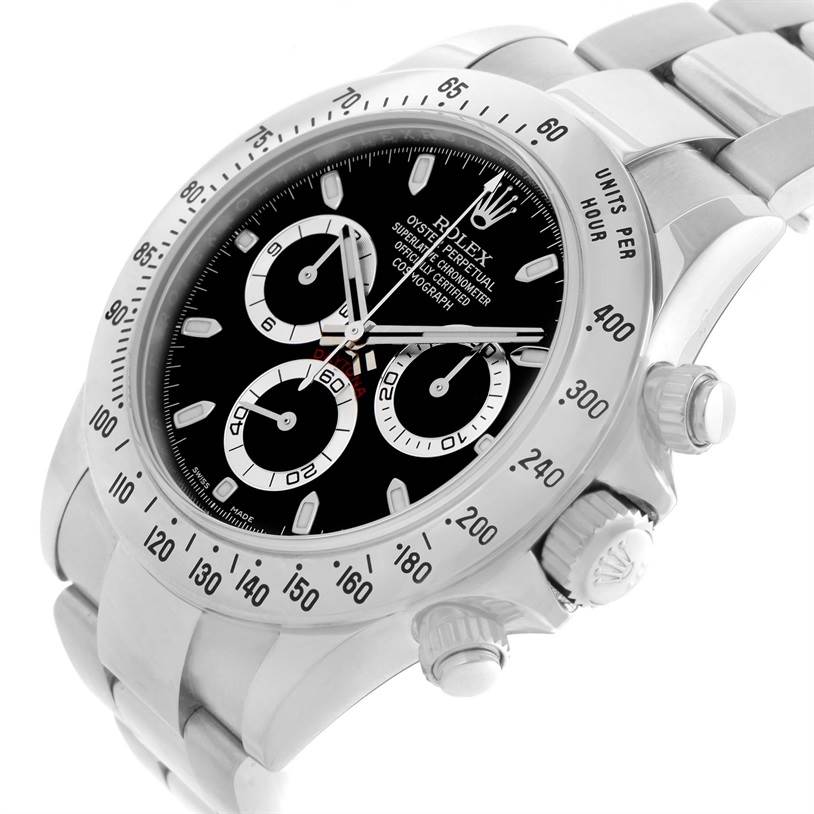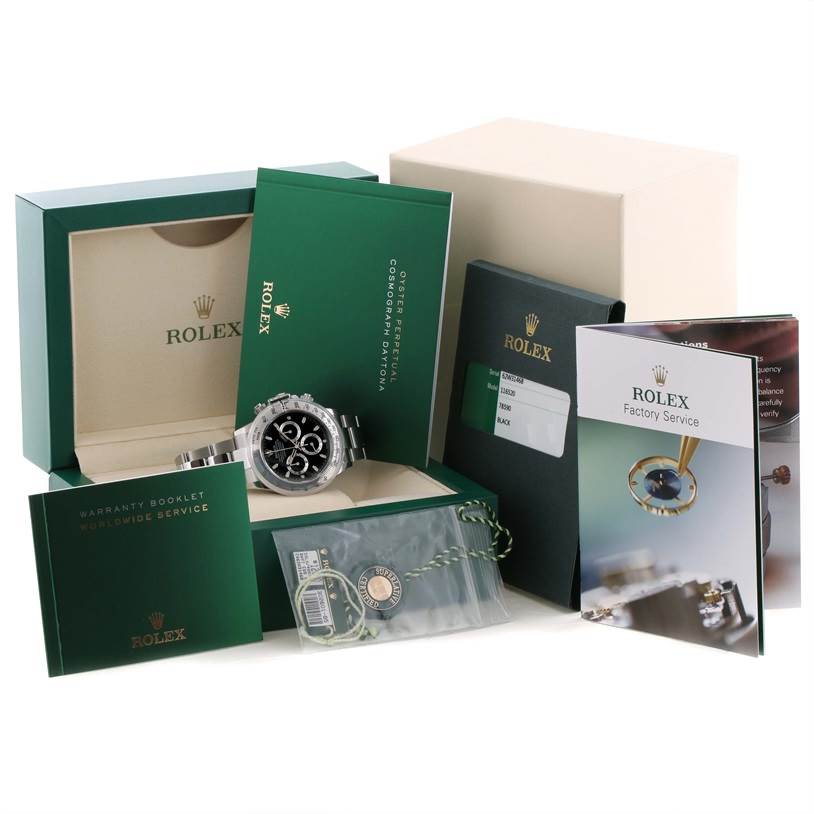The second generation of the Daytona appeared in 1988, both as a larger watch (40mm instead of 37mm) and as an automatic. Rolex used the base Zenith El-Primero movement to power these five-digit Daytona models, but modified the movement by about 50% and renamed it the Rolex 4030 movement. This generation (nicknamed the Zenith Daytona) is when Rolex began offering a wider variety of products for the Daytona line, including new material options such as white gold. However, Rolex paired the white gold “Zenith” Daytona ref. 16519 with a leather strap rather than the customary Oyster strap. 
The six-figure reference Daytona watch made its debut at Baselworld 2000, where the previous Zenith El Primo movement was replaced by Rolex’s in-house caliber 4130. The COSC-certified Caliber 4130 automatic chronograph movement offers a number of advantages, including fewer components for greater reliability, a Parachrom hairspring for greater resistance to external factors, and a 72-hour power reserve. Shortly after the release of the first Daytona watches with in-house movements, Rolex added the all-white gold Daytona 116509 to the collection in 2004 with a white gold Oyster bracelet.
Another notable upgrade made to the white gold Daytona model was the meteorite dial. While Rolex watch the Ref. 116509 with the coveted extraterrestrial planet dial in the past, for 2021, the dial is unveiled alongside a striking black subdial, somewhat similar to the iconic Daytona Panda dial. The fascinating thing about the Rolex Meteorite dial is that it is a genuine meteorite collected from the famous Gibeon meteorite in Namibia, Africa. This material is then treated to reveal the distinctive stripes.
Today, collectors can choose from four standard dial colors: Rising Sun Blue, with dynamic red accents within the subdials; Black, with shiny diamond hour markers; Steel, with contrasting black subdials; and Meteorite, with black subdials. The collection used to include shiny mother-of-pearl, as well as sporty “racing dials” adorned with old-fashioned hour markers. However, these dial options have since been discontinued.
